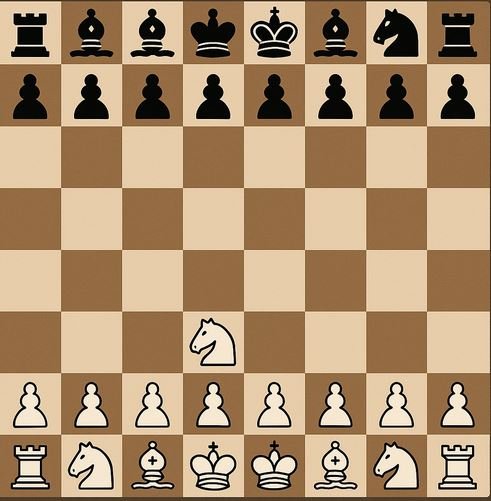Larsen’s Opening! It’s named after the Danish Grandmaster Bent Larsen, who was one of the most creative and unorthodox players of the 1960s and 1970s. This opening starts with 1.b3, which is quite similar to 1.g3 in its hypermodern approach, but it aims to control the center from the queenside rather than the kingside.
♟️ Key Ideas Behind Larsen’s Opening (1.b3):
- Control from the flank: By pushing the b-pawn early, White prepares to fianchetto the queen’s bishop (with Bb2), exerting pressure on the center, especially the e5 square.
- It’s hypermodern, aiming to control the center with pieces rather than pawns.
- Typically leads to a flexible structure where White can later choose whether to play c4, d3, or even e4 depending on Black’s responses.
- A great way to avoid mainstream theory, as many players are less prepared for this unusual opening.
♞ Common Setups and Ideas:
After 1.b3, White usually continues with 2.Bb2, fianchettoing the queen’s bishop, and often follows with Nf3 and g3 to complete the setup, transitioning into a hypermodern structure.
1. 1.b3 b6
- Black often mirrors White’s idea by preparing to fianchetto their own bishop.
- This can lead to symmetrical positions where the struggle focuses on piece activity rather than direct pawn tension.
2. 1.b3 d5 2.Bb2 Nf6
- Black occupies the center with pawns, and White aims to undermine the center with piece play.
- White can follow up with d3 or c4, challenging Black’s central pawns.
3. 1.b3 e5 2.Bb2 Nc6
- White might continue with e3, supporting the d4 break or prepare for d3 followed by a kingside fianchetto setup.
♞ Typical Plans:
- Fianchetto the Queen’s Bishop: Bb2 to control central squares (especially e5 and d4).
- Flexible Pawn Breaks: White can consider c4 (similar to the English Opening), d3, or even e4 at the right moment.
- Piece Play: Typically, White wants to use the fianchettoed bishop and knights to pressure Black’s central pawns from the sides.
✅ Pros of Larsen’s Opening:
- Unconventional and avoids a lot of mainstream opening theory.
- Flexible pawn structure that can adapt to a variety of situations.
- Less common, which can throw opponents off their preparation.
❌ Cons:
- White concedes central space initially, which Black can take advantage of.
- Can lead to slow and positional struggles rather than direct tactical battles.
🎯 Famous Games Involving Larsen’s Opening:
Bent Larsen himself used this opening with great success. One notable example is his victory over Bobby Fischer in the 1966 Interzonal tournament. Larsen used the opening to create imbalanced positions that played into his creativity and attacking style.
